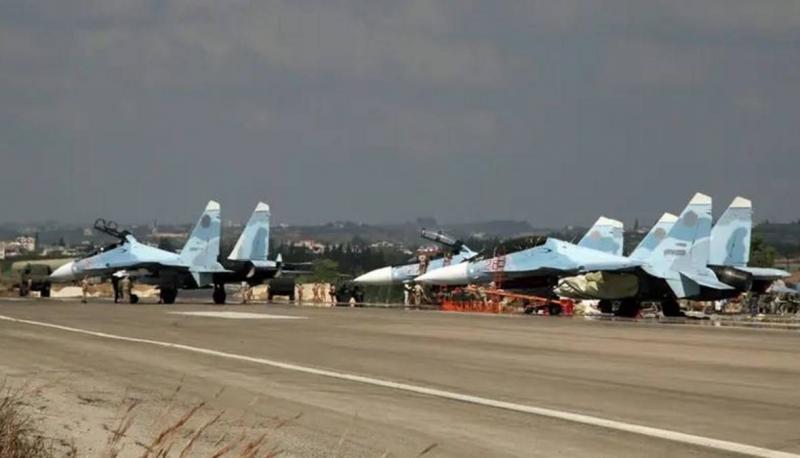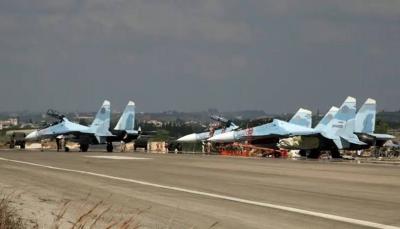Reports regarding the establishment of an Iranian naval military base in Tartus have raised numerous questions about its underlying motives and implications, while also reshuffling the dynamics between Russia and Iran in Syria. These reports suggest Russian involvement in facilitating the establishment of the Iranian base, which contradicts the competitive nature of both countries due to their differing strategies and objectives. A Syrian research center has ruled out the possibility of Iran successfully setting up a naval base, citing natural and political obstacles, and indicating that Iranian maritime activity on the Syrian coast remains modest, lacking signs of a military base's establishment.
Although Iran’s naval activity in Syrian waters dates back years prior to the onset of the crisis in 2011, due to the established alliance between Damascus and Tehran, Iran recently renewed its efforts to strengthen its military influence in Syrian coastal areas. However, some opposition media outlets in Syria have recently reported that Tehran has concluded the establishment of the base in Tartus. The "Syria TV" website stated that the Iranian Revolutionary Guard has finished setting up its first naval military base on the Syrian coast, which began less than a year ago as part of an Iranian plan to boost its forces in Syria, involving an increase in ballistic missiles, drones, and the establishment of a coastal defense base.
According to the site, special security and military sources revealed that the establishment of the Iranian coastal base was aided by Russian support and military cover provided by the Syrian regime’s army for the movements of the Revolutionary Guard in the area. The reported base is located between the cities of Jableh and Baniyas along the Syrian coast, near the Arab King beach within an air defense post belonging to the Syrian regime's army. Unit 840 of the Quds Force in the Revolutionary Guard, along with Unit 102 of Hezbollah, is tasked with securing military shipments and storage facilities for the base's equipment.
The same source noted that competition between Russia and Iran in Syria has not hindered Russia from assisting Iran in establishing the base by providing cover for the transfer of military equipment and naval vessels. The Iranian base sits between the Hmeimim base, considered the heart of Russian influence in Syria, and the city of Tartus, which houses a strategic port under Russian control.
Iran's involvement in the Syrian navy began in 2007, and after its direct military intervention in Syria post-2011, it has aimed to expand and strengthen its maritime capabilities. In 2017, Iran announced obtaining privileges for the establishment, management, and operation of a port in Tartus in the Ain al-Zarqa area, north of the Hamidiya border region with Lebanon, for a duration of between 30 and 40 years. Establishing military influence over the Mediterranean is intertwined with Iran’s economic interests, as it seeks to enhance its military strength in Syria and the region by solidifying its influence over Mediterranean shores, ensuring its future interests, such as reviving the Iraq-Syria oil pipeline (Kirkuk-Baniyas), and securing alternatives to Lebanese coasts, particularly following the Beirut port explosion. This also includes monitoring and coordinating the movements of Iranian warships in the Mediterranean and commercial vessels engaged in military activities, such as carrying missile components in their holds, conducting reconnaissance and electronic listening, as well as securing its strategic interests in Syria independently from Russia.
The "Jusoor Studies Center", an opposition research center operating from Turkey, cited several obstacles hindering Iran's efforts to strengthen its military influence on the Syrian coast, including:
- The presence of a Russian logistical support point in Tartus prior to 2011, which has since expanded into a military base through control over part of the military pier in Tartus and an increase in the number of ships there, as well as control over a portion of the port for the establishment of their elements' offices and equipment storage; thus, Russia would not allow Iran to establish a competing naval military presence near its base.
- The geographic attributes unfavorable for expanding military points into bases, where coasts vary greatly, featuring deep waters, shallow areas, and sandy regions, along with rocky zones near the shore, presenting risks that could lead to significant damage or total destruction of naval vessels. Additionally, it becomes challenging to input certain military naval units, as observed in the case of the al-Baida port in Tartus (al-Harathi barrack), which historically struggled to accommodate missile boats.
- The absence of necessary naval weapons for a naval base’s integration, such as cruisers, destroyers, missile ships, patrol boats, patrol ships, minesweepers, submarines, and naval aviation, alongside the construction of a specialized pier that Iran cannot afford due to high costs.
The center emphasized that Iran is not conducting any maritime operations on the Syrian coast, unlike its execution of numerous military land projects in collaboration with the Syrian regime forces, the latest being in 2023 with participation from Esmail Qaani, commander of the Quds Force in the Revolutionary Guard. The report concluded that this indicates the limited scale of the naval force Iran aims to establish, pointing out that the Arab King area—designated for the announced base— is suitable for maritime landings, suggesting that Iran’s positioning there may be defensive in nature rather than offensive, reflecting its concerns about possible maritime landings against it in Syria.




